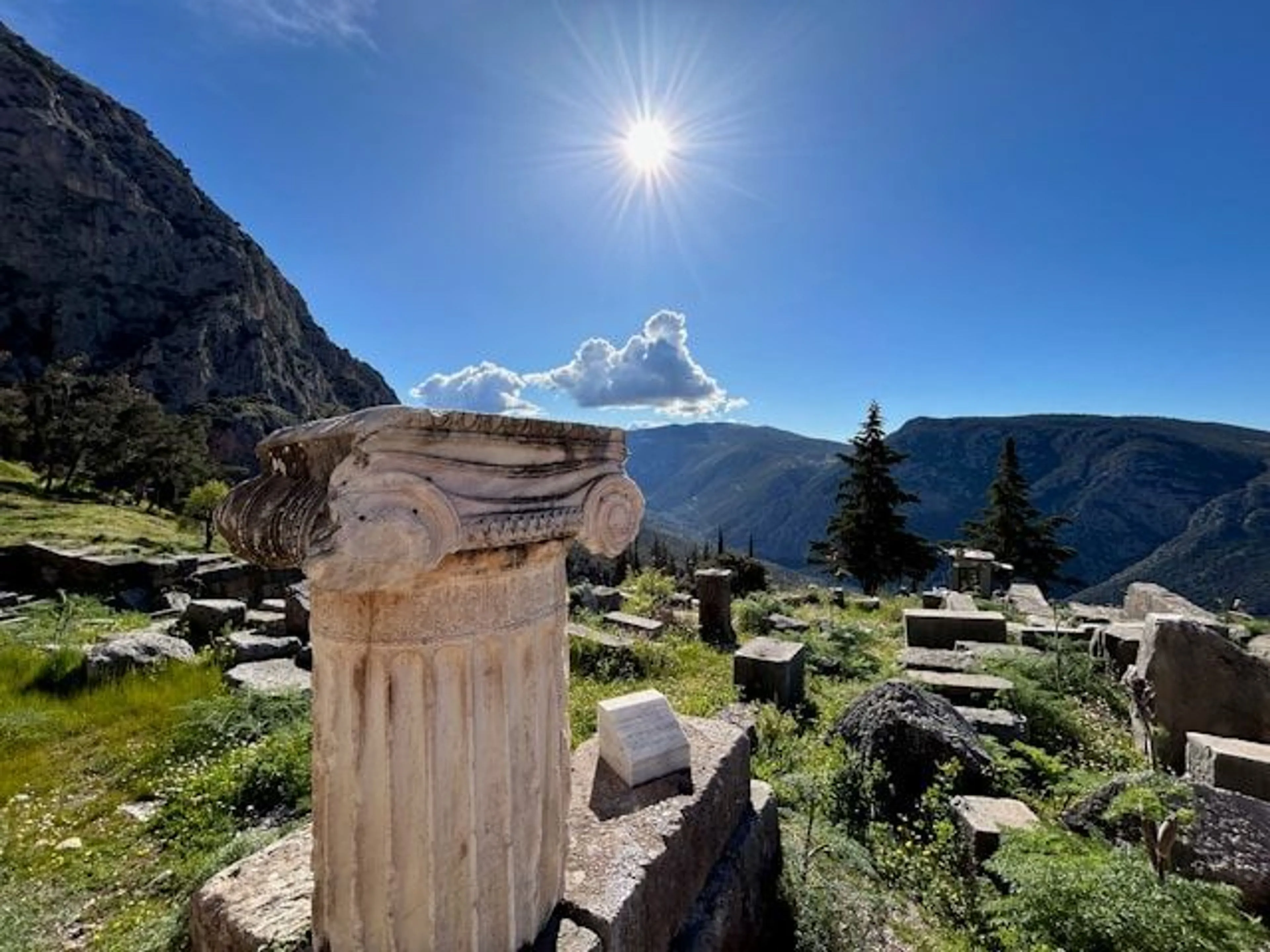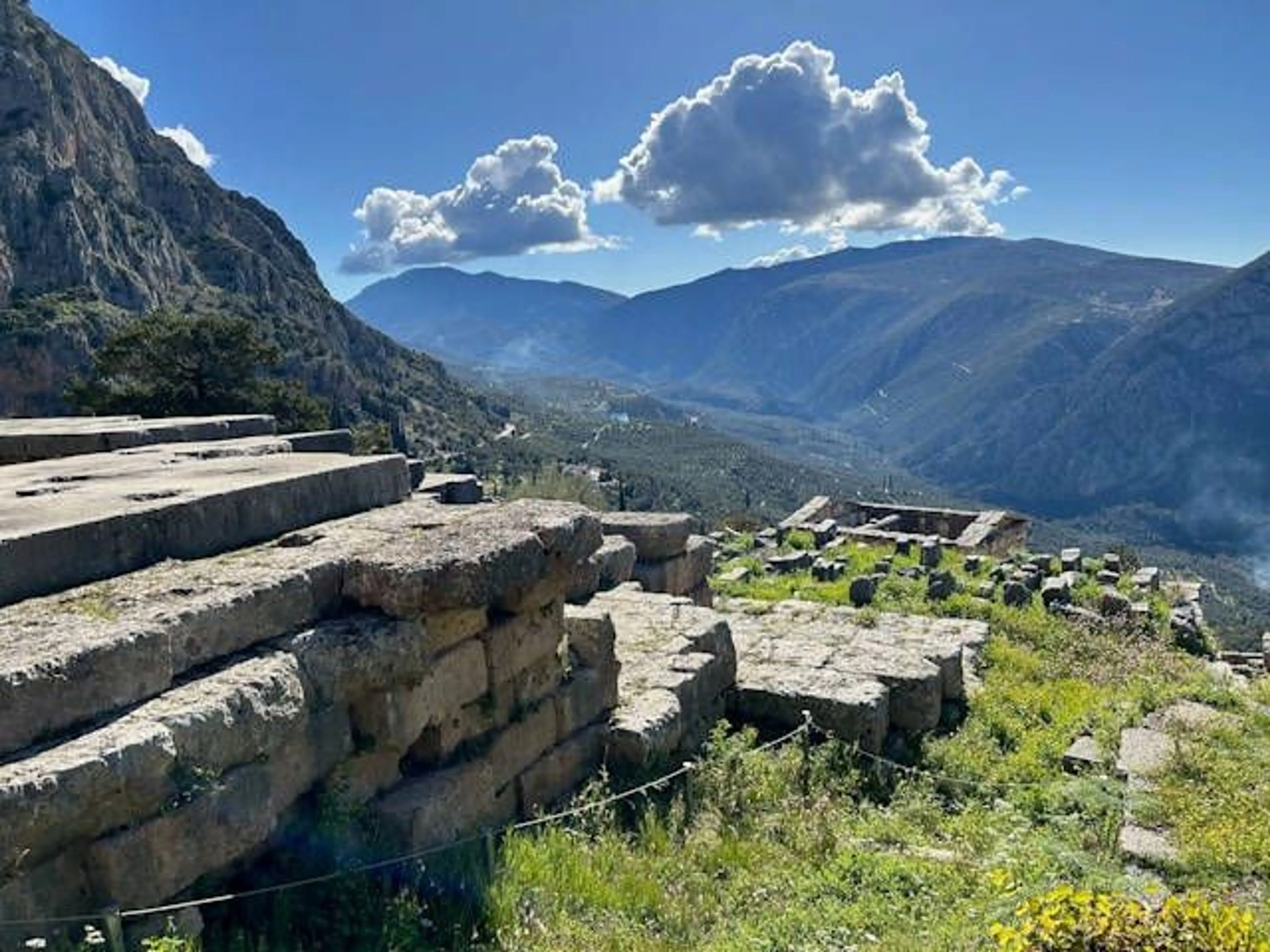Brief History of the Delphi Oracle: What Is It and Where Is It
Delphi is located at the foot of Mount Parnassus, near the place where the famous Greek sanctuary was located, which is currently one of the most important archaeological sites. This city, which belongs to the region of Sterea Ellada and the province of Fokída, has been considered a sacred place since ancient times, and various divinities followed one another in the worship of its sanctuary.
On a trip to Delphi, you can discover that it was a place of consultation with the gods, a sacred temple dedicated mainly to the god Apollo.
This sanctuary was located in central Greece and reached its maximum political influence in the 5th and 4th centuries BC. The oracle of Apollo was of paramount importance, and her words weighed heavily on the decisions of cities like Athens and Sparta. The presents offered to the gods by the states were placed in the treasures that lined the Via Sacra.

Oracle History
In its early days, the goddess-mother Gaia (Earth) and his daughter Themis were worshiped, and the source of the oracle was guarded by the python. The worship of Gaia was accompanied by the worship of Poseidon, the god of the springs and the rivers that fertilize the earth.
Apollo's presence was manifested through the oracles and transmitted through a priestess, the Pitia, traditionally, a woman of more than 50 years of age who, of her own volition, renounced normal civic life and remained in seclusion for the rest of her existence, and was chosen among the Delphic virgins.
In its early days, the oracle could only be consulted on a certain date of the year, the 7th of the old Bysios month, corresponding to February-March. Later, due to the large influx of pilgrims, it could be consulted at any time of the year, except in winter, when Apollo was thought to leave the sanctuary.
The Pythia sat on the adyton, or underground cellar of the temple, on a tripod and was enveloped by the smoke of bay leaves and barley flour. Next to it, it had the water of the Castalia spring and the omphalos, a conical stone that symbolized the center of the world.
After the ablution rituals, the consultants were admitted to the amaton and asked their questions. The response of the Pythia was communicated using sounds and movements of the body, interpreted by the prophets, and communicated to the priests who gave the meaning of the response.
Questions were never asked about the future, but about the opportunity to do something to get God's support or not. On a trip to Delphi, you will know this and much more.

Exploring Delphi
On a trip to Delphi, you can visit the Temple of Apollo. Visible today (there were six others successively built on the site) this temple dates back to the 4th century BC. Although ancient sources speak of a chasm in the interior, there are no remains of that crack in the earth from which the vapors that caused the trance emanated. Above the temple is the theater, very well preserved, where 5,000 spectators could sit; the works, which started in the 3rd century BC, were not completed until 160 BC, and later it was restored by the Romans. The view from the theater is worth the climb, as is the view from the stadium, which is up the mountain, at the highest point of the old city. Built and restored in various periods and modeled on part of the living rock, the stadium underwent a final transformation under Herod Atticus, the Athenian benefactor of the 2nd century BC. Embraced by a pine forest, this is a quiet refuge with the resounding majesty of the mountain as its background.